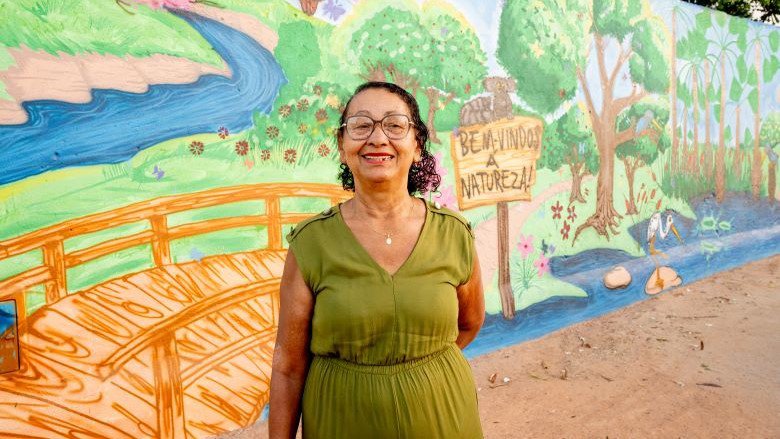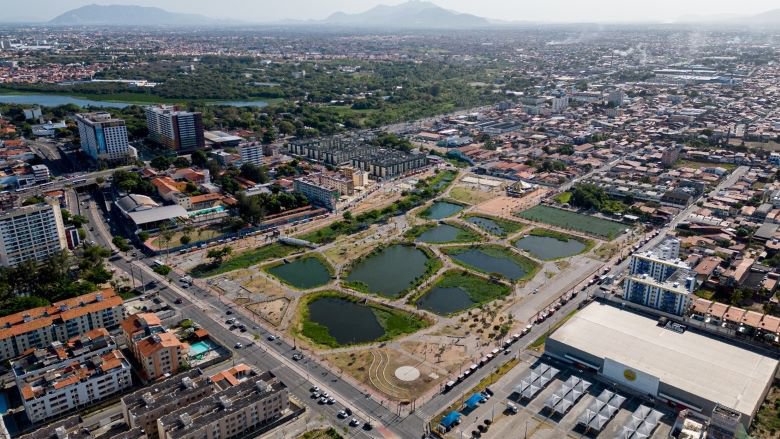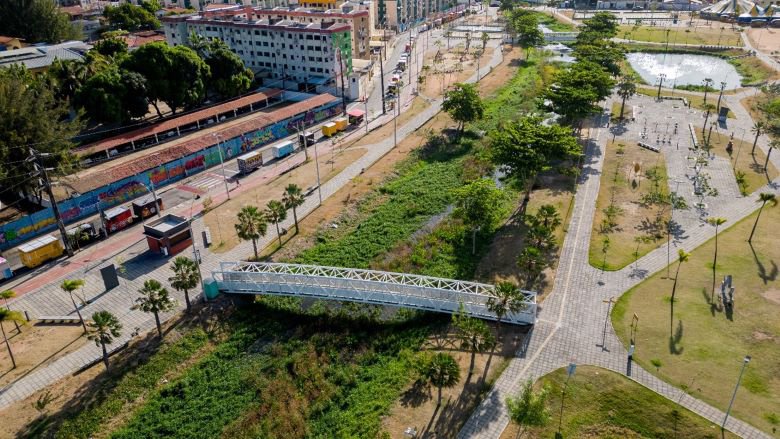Fortaleza, the state capital of Ceará, is widely known for its beaches, Crab Thursdays, forró music, and comedy shows. However, another local initiative—albeit less famous—shows a lot of potential to inspire Brazil and the world: the regeneration of urban green spaces under the Fortaleza Sustainable City project.
Led by the Fortaleza Mayor's Office and supported by the World Bank, the project focuses on improving land use and the urban environment, supporting the implementation of urban and environmental policies, and rehabilitating public spaces through interventions at the Vertente Marítima Basin and other selected green areas. So far, US$36 million have been invested—approximately half of the total loan value (US$73.3 million).
The project is now reaching its final year, and the regeneration of Rachel de Queiroz Park is one of its main achievements. The park—the second largest in the city—is 10 kilometers long and covers a total area of approximately 203 hectares, divided into 19 sectors. Redevelopment works in four sectors were completed in February 2022, covering 12.9 hectares. Work is underway in another two sectors, and should be completed by March 2024.
One of the sectors that have been completed—near the Presidente Kennedy district—included a large area prone to flooding, which was also used as an illegal dump. The project implemented a unique solution that has contributed to reducing water pollution and minimizing flooding at the local level, in addition to providing benefits to the population, biodiversity, and the local economy.
It consists of a wetland system formed by nine interconnected ponds. The water coming from Cachoeirinha Stream flows gravitationally from one lagoon to another, thus triggering a natural cleaning process known as bioremediation, which improves water quality across the whole system. In addition, over 1,000 trees were planted, and several community leisure areas were created.
Rachel de Queiroz Park and its new life constitute an excellent example of a “nature-based solution”. Such solutions focus on replicating natural processes, and represent one of the project’s differentiators. They are used to protect, restore, create, and/or manage natural or modified environments (including coastal or riverine environments). They are closely related to the objectives of adapting environments to extreme weather events (such as intense rainfall), and/or mitigating the effects of these phenomena.
“In most cases, nature-based solutions provide, in addition to environmental benefits, a number of socioeconomic benefits, such as enhancing leisure and sports facilities; promoting local economy and businesses; and increasing biodiversity, among others,” says Hannah Kim, senior specialist and project manager for Urban Development at the World Bank.
This is exactly what happened in the sector near Presidente Kennedy at Rachel de Queiroz Park. Through the project, a number of walking tracks, cycle paths, and leisure and sports areas were created in the area. In addition, the local government coordinated a program of cultural and educational activities. These new developments encouraged more people to visit the park, which in turn attracted several businesses. These improvements are estimated to have benefited around 70,000 people.
“It’s an innovative way of designing urban infrastructure, where the public use of urban facilities is aligned with the cycles of nature and the preservation of local biodiversity,” says Luciana Lobo, municipal secretary for Urban Development and Environment of Fortaleza.
In recognition of its achievements, Rachel de Queiroz Park was nominated for the Loop Design Award, one of the most respected architecture and design awards in the world. It also received the Building of the Year 2023 Award from Archdaily, a leading online platform in architecture and design.



